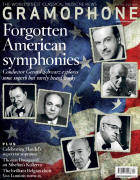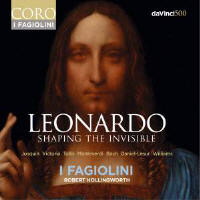Texte paru dans: / Appeared in: |
|
|
Outil de traduction (Très approximatif) |
|
|
Reviewer:
Alexandra Coghlan Clouds of doubt may have recently gathered around Leonardo da Vinci’s Salvator mundi – the most expensive painting in the world, authenticated in 2011 but subsequently kept from public view – but there’s absolutely no questioning the provenance of this rather extraordinary recording. Only I Fagiolini and their artistic director Robert Hollingworth could have come up with a project spanning not only centuries and styles (Rore brushes shoulders with Rubbra, Janequin, Bach and Daniel-Lesur) but also art forms, and pulled it off so convincingly. Leaving others to mark Leonardo’s 500th anniversary with predictable ‘Leonardo and his Musical World’ homages, Hollingworth and his intrepid musicians strike out in a rather different direction. With the help of the art historian Martin Kemp they have chosen 10 of the artist’s images (including The Last Supper, Mona Lisa and the Vitruvian Man) and matched them to musical works chosen to echo, amplify or offer commentary on the many different aspects of Leonardo’s philosophy, style and subject matter. The title painting, for example, finds itself paired with Tallis’s and Howells’s settings of the Salvator mundi (though neither, in their forthright, forward-moving delivery, seems to chase the painting’s cloudy, sfumato stillness), while the vivid action-shot of The Battle of Anghiari finds its soundtrack in the clash and clatter of Janequin’s La guerre. And what else could accompany that geometric exploration of proportion the Vitruvian Man than Bach’s Contrapunctus I from The Art of Fugue, rendered wordlessly here, Swingles-style, by four unaccompanied voices? Most striking is the pairing of the protuberant features of Leonardo’s Five Grotesques with the earthy exaggeration and vocal manipulations of Orazio Vecchi’s madrigal comedy L’Amfiparnaso. I Fagiolini are at their best here and in the secular works by Janequin and Monteverdi – music dominated by drama and character – where their daring and sense of play can come to the fore. Their sacred polyphony will divide listeners but those favouring a more interventionist, Italianate approach (the opposite of The Sixteen’s otherworldly Anglicanism) will take pleasure in the sensuality of Victoria’s Alma redemptoris mater and the spacious sonic effects of the Agnus Dei from Josquin’s L’homme armé Mass. With flexible forces expanding from just four voices up to a nearly 40-strong instrumental and choral ensemble, I Fagiolini are at their most malleable and multifaceted here in a luxury project that can’t have come cheap. Colour images of all the paintings are lovingly reproduced in the booklet, giving the listener as much of the full experience (the programme is being toured currently, complete with projected images) as possible. But it seems like a false economy to banish the allimportant texts to the website. Music may help to ‘shape the invisible’ but its structures are fragile without the scaffolding of text. |
|




